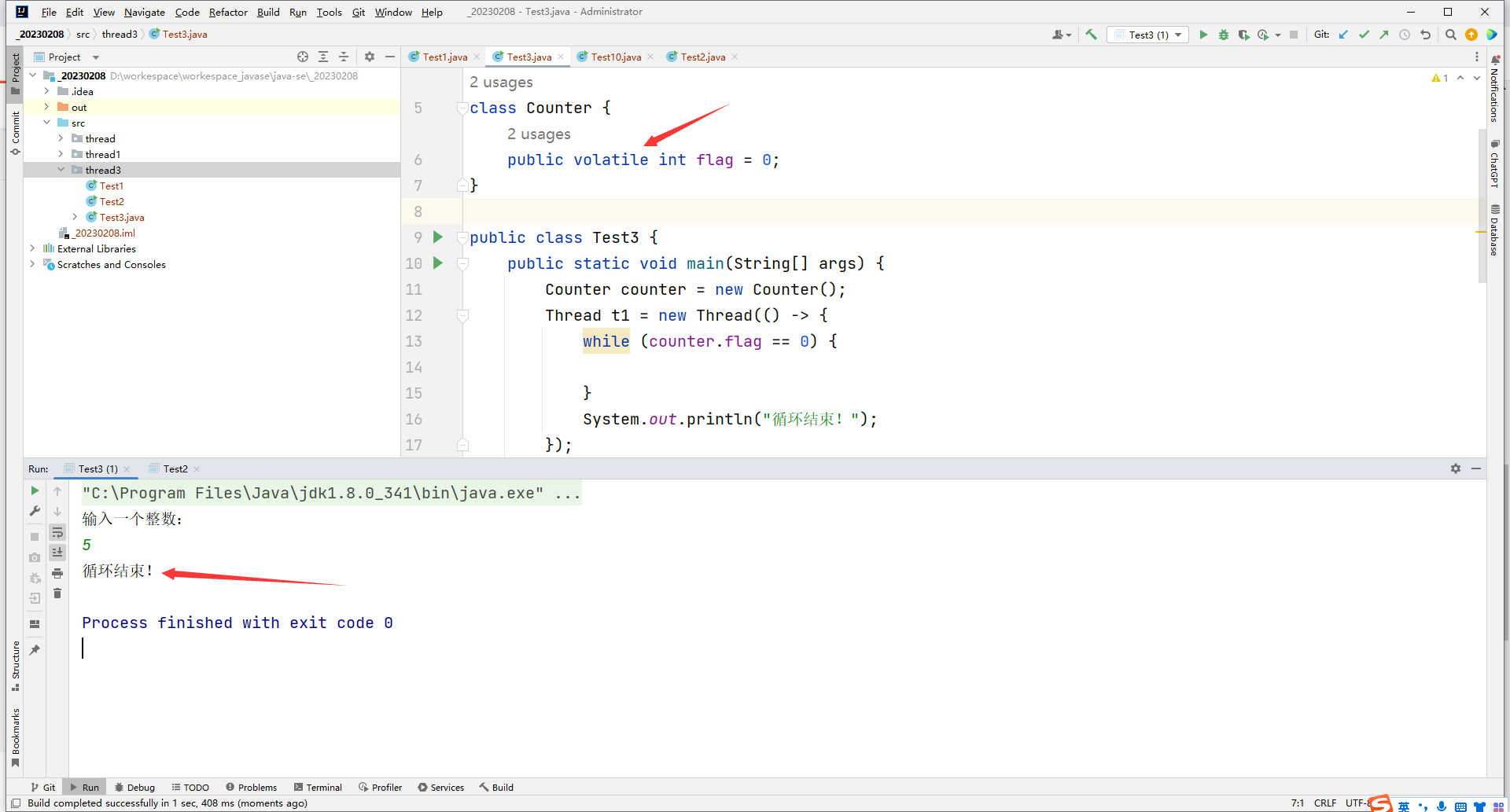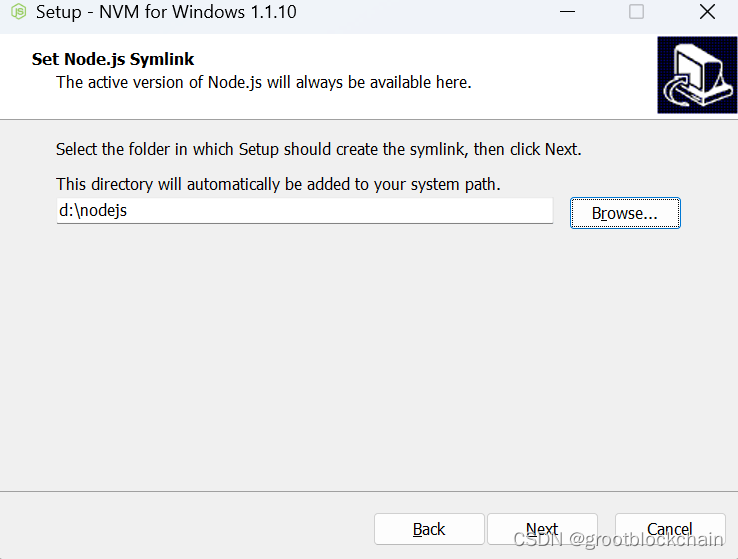1.volatile 能保证内存可见性
volatile 修饰的变量, 能够保证 "内存可见性".

代码在写入 volatile 修饰的变量的时候,
- 改变线程工作内存中volatile变量副本的值
- 将改变后的副本的值从工作内存刷新到主内存
代码在读取 volatile 修饰的变量的时候
- 从主内存中读取volatile变量的最新值到线程的工作内存中
- 从工作内存中读取volatile变量的副本
前面我们讨论内存可见性时说了, 直接访问工作内存(实际是 CPU 的寄存器或者 CPU 的缓存), 速度非常快, 但是可能出现数据不一致的情况.加上 volatile , 强制读写内存. 速度是慢了, 但是数据变的更准确了.
2.代码示例
- 创建两个线程 t1 和 t2
- t1 中包含一个循环, 这个循环以 flag == 0 为循环条件.
- t2 中从键盘读入一个整数, 并把这个整数赋值给 flag.
- 预期当用户输入非 0 的值的时候, t1 线程结束.
package thread3;
import java.util.Scanner;
class Counter {
public int flag = 0;
}
public class Test3 {
public static void main(String[] args) {
Counter counter = new Counter();
Thread t1 = new Thread(() -> {
while (counter.flag == 0) {
}
System.out.println("循环结束!");
});
Thread t2 = new Thread(() -> {
Scanner scanner = new Scanner(System.in);
System.out.println("输入一个整数:");
counter.flag = scanner.nextInt();
});
t1.start();
t2.start();
}
}
- t1 读的是自己工作内存中的内容.
- 当 t2 对 flag 变量进行修改, 此时 t1 感知不到 flag 的变化.
如果给 flag 加上 volatile

3.volatile 不保证原子性
volatile 和 synchronized 有着本质的区别. synchronized 既能够保证原子性也能保证内存可见性., volatile 保证的是内存可见性.
package thread3;
class Counter1 {
volatile public static int count = 0;
public void increase() {
count++;
}
}
public class Test4 {
public static void main(String[] args) throws InterruptedException {
Counter1 counter = new Counter1();
Thread t1 = new Thread(() -> {
for (int i = 0; i < 50000; i++) {
counter.increase();
}
});
Thread t2 = new Thread(() -> {
for (int i = 0; i < 50000; i++) {
counter.increase();
}
});
t1.start();
t2.start();
t1.join();
t2.join();
System.out.println(Counter1.count);
}
}
此时可以看到, 最终 count 的值仍然无法保证是 100000.
synchronized 也能保证内存可见性
synchronized 既能保证原子性, 也能保证内存可见性.
package thread3;
class Counter1 {
public static int count = 0;
public void increase() {
count++;
}
}
public class Test4 {
public static void main(String[] args) throws InterruptedException {
Counter1 counter = new Counter1();
Thread t1 = new Thread(() -> {
synchronized (counter) {
for (int i = 0; i < 50000; i++) {
counter.increase();
}
}
});
Thread t2 = new Thread(() -> {
synchronized (counter) {
for (int i = 0; i < 50000; i++) {
counter.increase();
}
}
});
t1.start();
t2.start();
t1.join();
t2.join();
System.out.println(Counter1.count);
}
}



















